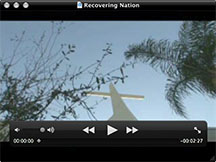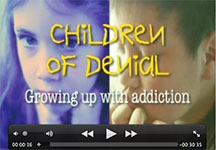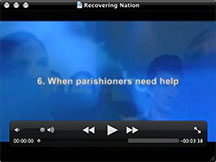MODULE IV: Action
General Considerations
Competency 8 - Be familiar with and utilize available community resources to ensure a continuum of care for the:
Addicted person
Family system
Affected children
Competency 9 - Have a general knowledge of and, where possible, exposure to:
The Twelve-Step programs – A.A., NA, Al-Anon, Nar-Anon, Alateen, ACOA, etc.
Other groups
Competency 11 - Be able to shape, form, and educate a caring congregation that welcomes and supports persons and families affected by alcohol and other drug dependence.
Competency 12 - Be aware of how prevention strategies can benefit the larger community.
Many students will likely not be familiar with the resources available for those whose lives have been impacted by addiction. Religious leaders need to be aware that they will have to exercise some initiative in securing this information in the area where they are doing ministry. Most communities in the U.S. provide emergency numbers for people to utilize in times of crisis. Religious leaders are encouraged to have those resources readily available when their ministry commences so that they are prepared for the situations that they will inevitably face.
- The person seeking help first is usually someone affected rather than someone afflicted with alcoholism or addiction.
- The presenting problem often is something other than addiction. The person may share concerns about finances, legal issues, health concerns or a variety of other matters. The religious leader needs to listen carefully, but also keep in mind that addiction affects all major areas of a person's life. The person coming to see her/his religious leader often is not comfortable directly addressing the real issue, but will describe the affects of addiction.
- It is important to be tactfully direct and ask a leading question like, "How is alcohol used in your family?" This is not a "yes" or "no" question! Rather it gets to the heart of what could very well be the real issue by assuming that drinking is a critical if not the prime factor in the household. Recall that denial is a hallmark of addiction.
- Remember that not EVERY problem is linked to addiction. However, in a large percentage of the situations where there are problems in major areas of life, alcohol abuse or addiction is often the culprit. It is best to begin with the assumption of addiction. If that turns out not to be the case, at least one will have started where a majority of problems originate.
2. Knowledge about the emergency services available in each community.
- In the U.S., 911 is a universal number to call in the event of a critical emergency and should be utilized when anyone is in danger.
- The location of "safe houses" for those who are experiencing abuse needs to be known by religious leaders. If there is no facility comparable to a safe house, then secure information about where people who are in danger can be taken.
- Provide information on a web site and a phone center that are accessible 24 hours a day, seven days a week which have information on local and State wide treatment agencies. The Federal government's Substance Abuse Treatment Facility Locator is available online or one can call a toll-free Referral Helpline at 1-800-662-HELP (4357).
3. Referral information for the nearest Twelve-Step groups is vital.
- Since alcoholism and addiction isolate people impacted by the addiction of others from the wider social matrix, introducing people to Twelve-Step groups such as Al-Anon family members is important as a way of finding social support around a common concern. There are groups for teens called Alateen. Some school-based Student Assistance Programs offer educational support groups for students, and this possible resource should not be overlooked. If such groups are not available in the community in which one is serving as a religious leader, then seeking out physicians, nurses, social workers, pastoral counselors, welfare employees and others who are in human services can be helpful in gathering information about available resources.
- As noted in Module 1, a group called ACOA or Adult Children of Alcoholics is available in many communities designed to speak to the needs of adults who grew up in addictive households and are now dealing with their own unique problems in their lives.
- For those who are experiencing addiction, Twelve-Step or mutual aid support groups are also available. Alcoholics Anonymous (A.A.) is likely the best known group, now boasting a membership of more than two million recovering people throughout the world. Twelve-Step groups are also available for those addicted to narcotics (Narcotics Anonymous). Similarly, a group for gamblers (Gamblers Anonymous) as well as a variety of other addictions, such as addiction to work, sex, the internet, religion and food, all feature similar programs of recovery.
4. Utilizing people with a substantial period of recovery as resources
- People in your religious communities who have been in recovery for at least two years, preferably longer, who are willing to serve in a supportive and/or educational role are a powerful resource. Students should be alerted to keeping their eyes and ears open in the communities where they serve for these people in recovery from alcoholism or drug addiction or are recovering family members. These people may be aides and allies in dealing with addiction and its impact upon members of the household.
- If someone within your own religious tradition is not available, most communities will have people who have experienced a substantial period of quality sobriety. These people are often eager to work the twelfth step of their program and are helpful in bringing the message of recovery to those who still suffer. Encourage students to contact the closest office of Alcoholics Anonymous and Al-Anon to secure people who may be willing to speak to the faith community about addiction and about family support for recovery.
- Having a working relationship with such persons either inside or outside of the faith community is an effective tool in ministry. It may take some time to locate such persons. However, most Twelve-Step groups are open to having religious leaders learn about the program and normally are more than anxious not only to welcome a religious leader, but to be of any assistance that s/he may require. Attending some "open" meetings of a Twelve-Step group is one way for students to introduce themselves to the recovery community.
- When the people in recovery know that a religious leader cares and does not condemn those who experience addiction in themselves or in their families, they normally will be eager to work with you and support you in your ministry.
5. Having literature available for people who seek your counsel with regard to issues of addiction
- Twelve-Step groups are usually willing to supply religious leaders with brochures and tracts that explain the nature of addiction, its impact on significant others and constructive steps to address it. In addition, material is also available from many government and other web sites concerned with addiction issues. This literature is often provided free of charge or at a very nominal cost. Having this kind of literature available says that your religious community is concerned about alcoholism and addiction and stands ready to be of assistance to those who suffer.
- If your synagogue, mosque or church has a library, books can be ordered that address alcoholism and addiction in its multiple expressions. (See the Bibliography from which you can develop a library.)
- Religious communities can sponsor classes, seminars and forums on the topic of addiction and its impact on the household.
- There is a plethora of films, DVDs, videos and websites that provide information. You can check for these with any online search engine. For those who would like a better understanding of the treatment process itself, Gerry Rogers' DVD, Welcome to Treatment (12 minutes), provides a good introduction.
- Organizing the community of faith itself is the most powerful resource available for addressing the implications and ramifications of addiction, and using the materials suggested above and any other resources you may find helpful to the process.
6. Be aware of the possibility of Intervention as a way to interrupt the addictive process.
- An alcoholic does not necessarily have to hit bottom before s/he can be helped.
- Vernon Johnson writes about this in his book and calls it, raising the bottom1 so that the alcoholic and those affected by the addict will not have to lose everything before something can be done.
- Religious leaders should know how to contact people who are skilled in the intervention process.
- An outline of the basic tenets and the structure of an intervention are found in Handout 1 of this module. (Note: Normally religious leaders are not equipped nor expected to conduct interventions. It is recommended that clergy understand intervention and know their community resources that can help facilitate one when needed, but generally clergy should remain in their appropriate role of support and not participate in an organized intervention. In some rare instances, the location of the faith community and the circumstances of the family may necessitate the religious leader participating in an intervention, but it is not generally recommended.)
7. Speak openly and often about the realities of addiction when the occasion presents itself in your faith community. Become an advocate for recovery in the wider community.
- When preaching, teaching and carrying out other functions in your role as a religious leader, speak honestly, openly and respectfully about the seriousness of addiction and its implications for individuals, especially with respect to the impact on children.
- Promote the idea that illnesses and imperfection are inherently human conditions, and that help and hope are available.
- When religious leaders in communities can speak with one accord about the prevalence of addiction and the need for recovery, there is a ripple effect in the community. Encourage students to cooperate with other religious bodies in the communities in which they serve so as to form a united front against the impact of addiction on children as well as adults.
- Being a champion for those entangled in an addictive system and becoming an advocate in the public as well as religious arena, is an important contribution that can be made by religious leaders.
- Develop a process for welcoming people who are new to recovery. Many times they have negative feelings about any and all faith communities. This may be a result of being poorly treated during the course of their illness, or they may perceive that they are being judged. Protecting their anonymity is an important consideration, unless they make the choice to acknowledge their illness and their involvement in a recovery regimen. If the religious leader and other people in recovery are aware that this person is just beginning the journey of recovery, a special welcome can be extended by those who are aware of the situation so the recovering person can feel more welcomed and at ease.
8. Be aware of the reality of relapse (often times referred to as a slip) that can occur after a person has become sober.
- Involvement in treatment and/or Alcoholics Anonymous does not preclude a person from having a relapse or a slip which simply means that s/he has started using again. Relapse can occur in any chronic disease, as in diabetes and hypertension.
- This can be a devastating experience for those afflicted as well as those affected who may believe that once a person has gotten sober, that is the end of the situation.
- There are a number of tell tale signs that often occur prior to a relapse. See Module IV Handout 2 for a detailed enumeration of the behavior that often precedes a relapse.
9. Address the importance of working on strategies for prevention of addiction beginning with children.
- The metaphor often used to talk about prevention is that rather than running an ambulance service for those who have gone over the precipice, it might be judicious to prevent people from falling over the precipice thereby precluding the need for ambulance service.
- It is a fantasy to suggest that all addictions can be prevented. However, we can do much more in the area of prevention of alcoholism and drug addiction.
- Religious communities can do prevention work in a variety of ways with children and youth.
-
Provide for a loving and child friendly environment within your community of faith. Statistics indicate that children and youth who are anchored in their religious tradition are less likely to develop addictions.
-
Speak openly with children about the reality of addiction and impress upon them that it is not their fault if a parent is addicted and that the faith community will support them.
-
Communicate clearly the message that the community of faith is a safe community where any and all topics can be discussed in a caring and respectful way.
-
Anchor children and youth in the core values of your religious tradition emphasizing the fact that all people are of worth and value in the eyes of their Creator
-
Implement a mentoring system for children and youth who live in a household where one or more significant adult is still using. Children need to have healthy role models to observe in juxtaposition to the behavior they are witnessing at home. Mature members of the faith community can function as powerful role models for these young people.
-
Make provision for healthy group activities where children and young people can learn respect for one another and themselves.
-
Teach children and young people that neither they nor anyone else is perfect. Rather than harboring their disgust, anger and resentments, the faith community is a place where such feelings are accepted and addressed in love.
-
10. Utilize the existing resources developed for children who are living in an alcoholic environment.
- A marvelous set of ideas for working effectively with children is suggested by Jerry Moe in his article entitled, "Small Steps Becoming Large: Effective Strategies to Assist Children of Alcoholics in the Healing Process" found in Children of Alcoholics: Selected Readings, Vol. II, edited by Stephanie Abbott and published by NACoA, 10920 Connecticut Avenue, Suite 100, Kensington, MD 20895, www.nacoa.org. Moe suggests five criteria for working with children:
- Enter the children's world
- Create a safe and nurturing environment
- Beyond words…experiential learning
- Acknowledge children's learning styles with varied activities
- Have fun
In this article he provides creative ways of working with children and enabling them to give voice to their situations. (pp. 79-93).
- Enter the children's world
- In the same volume, Cathleen Brooks in her article entitled "The Secret Everyone Knows: Help for You if Alcohol is a Problem in Your Home," writes sensitively about finding out from children if alcoholism may be a problem in their home. She has a series of ten questions for the child to answer and then writes about the power of the secret that they may feel forced to keep and why secrets have such a negative impact on the life of a child. She writes out of her own experience and thus makes the experience real for the reader. (pp. 145-157)
- In addition, the Children's Program Kit, (which was developed by NACoA), provides help for children from pre-schoolers through teens; and can be used with preschools, youth groups, parent groups and community and faith groups.
- Another excellent resource for understanding and working with children who are living in an alcoholic environment is Claudia Black's video, Children of Denial (52 mb). This video can be viewed via download to your desktop through the link provided or by clicking play below.
11. Religious Communities can do preventative and restorative work with adults as well.
- Knowledge is power and having accurate information about alcoholism and other addictions can work preventatively as well as for healing.
- Section III of the book entitled, Children of Alcoholics: Selected Readings (cited above) is devoted exclusively to adult children of alcoholics. Well known people in the field of addiction present their varying points of view regarding adult children of alcoholics, the process of healing, family dynamics and treatment issues as well as data concerning the incidence of alcoholism among siblings and the general impact that it has on the household.
- Section 5 under "General Considerations" provides the resources that adults could implement and utilize for educating themselves about addiction.
1. Vernon Johnson, I'll Quit Tomorrow. New York: Harper and Row, 1980.
Module Home • Introduction • General Considerations • Spirituality and the Twelve Steps • Factors that Contribute to the Success of the
Twelve Step Program • Phases of the Fifth Step Ministry • Additional Module of Possibilities



